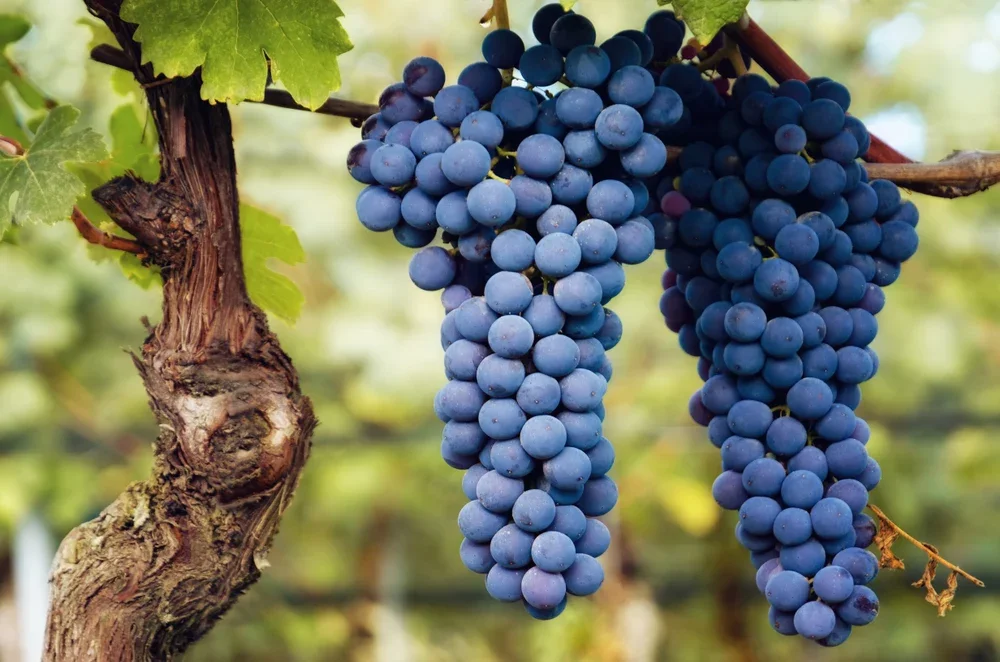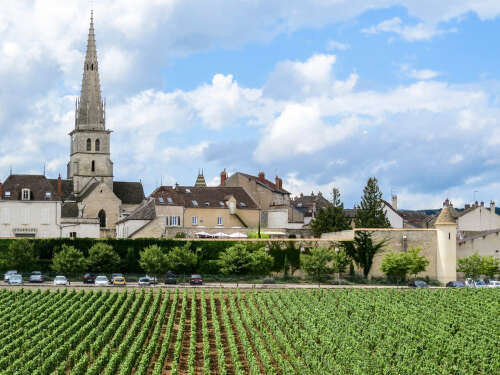
Do grape varieties have intrinsic characters that come through time and place, asks Benjamin Lewin MW. Or does typicity simply follow fashion?
If grapes or place have intrinsic character, typicity and fashion should be the absolute antitheses of one another. But any review of the history of winemaking, even over short periods, shows that typicité (as the French call it) faithfully follows fashion. So, do grape varieties have intrinsic characters that come through time and place? Does typicité exist? Does even terroir exist, at least in the sense of conveying unique properties to the wine? As a practical corollary, is it reasonable for an AOP to insist in its agrément on conformance to some idealized view of its character?
There may be no simple answer—indeed, the answer may depend on the prism of the grape variety through which you examine the question. At one extreme, take indigenous varieties that have never spread beyond their origins. Certainly, in many cases (perhaps most), this is because the variety does not make interesting enough wine for growers in other areas to try it out. If it has a typicity, it is uninteresting.
On the other hand, there are varieties that make fantastic wines in their places of origin, but attempts to propagate them elsewhere have never been successful. Take Nebbiolo: Nothing has ever been produced anywhere else in the world, not even really elsewhere in Piedmont, to match the great Barolos and Barbarescos. Here is a unique match between place and variety that defines the concept of typicity.
Take Sangiovese in Tuscany: It makes great wine in Montalcino, excellent wine in Chianti Classico, and good wine in Montepulciano. But even Antinori’s attempt to produce Sangiovese on Napa Valley’s Atlas Mountain did not produce wine to rival Antinori’s own results in Tuscany. Given the past decade of efforts to improve the quality of Chianti Classico—first with the 2000 project to improve clonal varieties, then with the introduction of a new top level, gran selezione, intended to produce world-class wines—it may be an open question whether the differences between Chianti Classico and Montalcino are a demonstration of intrinsic effects of terroir on typicity or due to constraints of history.
Certainly, there are differences even, for example, within the area of Montalcino, with some wines showing that faintly savage, savory character that for me is the typicity of Sangiovese but others tending more toward deep, chocolaty overtones. Of course, that brings up another question. Let’s accept for the moment that there is a typicity to each grape variety, at least if it is not grown under extreme circumstances (such as very hot or very cold places, or very dry or very wet places). It is always possible to destroy typicity with extremes of winemaking, lashings of new oak being the most obvious technique.
Proof or refutation?
At the other extreme, we might ask whether the “international variety” is the ultimate proof of typicity (character comes through, independent of time and place) or the ultimate refutation (the variety can be grown anywhere without any particular affinity for one place, and its character depends on each place). In the case of Cabernet Sauvignon, perhaps the best-known international variety, fashion may play as important a role as any intrinsic character. You might say that fashion drives—perhaps even created—the concept of the international variety, because what else was the impetus to grow the variety in places far from its origins but an attempt to jump on a fashion?
When Cabernet Sauvignon was first grown in Napa Valley in the early 1970s, the basic concept was to repeat its success in Bordeaux by producing the same sort of wine. After the Judgment of Paris success in 1976, opinion moved to the view that Napa could produce a different sort of wine, richer and fruitier. After the 1982 vintage in Bordeaux heralded the start of warmer vintages, Bordeaux moved to imitate Napa, with later harvests producing wines richer, fuller, and less overtly tannic than anything produced before.
Until the 1970s, Left Bank Bordeaux often had quite a herbaceous tang—delicious in a top vintage but admittedly sometimes out of hand in cooler vintages. Herbaceousness was regarded as part of the DNA of the variety. Today, if you mention the word “herbaceous” to a winemaker in Bordeaux, he will wrinkle up his nose—if he does not actually throw you out of the château. The driving force for Cabernet Sauvignon today is the fashion for phenolic ripeness. It’s not unfair to say that differences in styles are due mostly to differences in the concept of exactly what ripeness means, just how far to go.
I take the view that at the extreme of ripeness, all grape varieties tend to taste the same: very fruity, jammy, with high-toned aromatics. At the extreme of overripeness, Cabernet Sauvignon, Shiraz (rather than Syrah, since the New World is where most of the extremely ripe Syrah-based wines are found), Merlot, Grenache, and even Zinfandel all have a similar character. For people who complain that these wines have lost typicity, I would say that they do have typicity, but it is no longer varietal typicity. It is the über-typicity of superripeness, which subsumes all else.
Considering their genetic relationship, perhaps it is not surprising that Sauvignon Blanc has undergone much of the same transition as Cabernet Sauvignon—from overtly herbaceous historically in Sancerre, to fruity, even in extreme cases to exotic fruits such as passion fruit, in New Zealand. Here you could define typicity in terms of the aromatic molecules associated with the variety. Herbaceousness is due to methoxypyrazines (synthesized in the grape), while tropical characters come from volatile thiols (formed during fermentation from odorless precursors that are typical of the variety). Methoxypyrazine levels are controlled by ripeness at harvest; thiol levels can be influenced by choice of yeast. What appears to be a range of typicities, even opposing typicities, is in fact due to the balance between these two types of compounds, both intrinsic to the variety. So, what price typicity?
Does a whiff of petrol identify the essential character of Riesling, or is it a flaw? It’s created in Riesling by TDN (trimethyl-dihydronaphthalene), which is rarely found in grapes but develops in the bottle by slow chemical actions. Environmental conditions, such as temperature and water supply, influence its production. It has, in fact, become more typical of Riesling in recent years, since the change in climatic conditions has resulted in earlier development of TDN, in the first few years after release rather than after decades. Here is a case where climate change has not so much changed typicity as enhanced it. Of course, the occurrence of petrol is not always popular: I believe there is a research project at Geisenheim to breed Riesling that does not develop TDN. I guess this accepts the view that petrol is part of the typicity or Riesling but has the objective of changing that typicity.
Chardonnay is in many respects the antithesis of Sauvignon Blanc or Riesling: a chameleon with little typicity, its character is influenced more by winemaking than anything else. Chardonnay can be lean and even green, and quite acidic; it can be fat and buttery; or it can taste more like a forest than a wine. Malolactic fermentation is a major influence: When blocked, the wine can be lean and linear; when pushed to extremes, the wine can taste of popcorn. Maturation in stainless steel favors the lean style. The effects of maturation in oak depend greatly on how much new oak is used, because Chardonnay is like a sponge in absorbing the character of the oak. Perhaps, ironically, nothing typifies Chardonnay’s lack of typicity more than the ABC movement a while back: Anything But Chardonnay presupposes that Chardonnay has distinct typicity, but the movement was more a protest against fashion than an opinion about the variety.

Place or taste?
Is the concept of varietal typicity intrinsically in conflict with the concept of typicity of place? Doesn’t the idea that a variety has typicity imply that its character rises above place? This might imply that the so-called international varieties were chosen because their typicity can be expressed in many places. I would suggest that the way their character has changed with worldwide propagation argues against this idea but leaves open the possibility that there is typicity for each place, at least when a particular variety is grown there.
When we talk about typicity of place, or the dominance of terroir, which amounts to much the same thing, of course we turn to Burgundy, where the concept more or less originated. Pinot Noir and Chardonnay are accepted as the varieties par excellence to display effects of terroir. There are far too many cases of adjacent vineyards that consistently produce different results to argue with the concept. Of course, these differences are overlaid by the style of each producer.
Yet changes in white Burgundy cast some doubt on the notion of a unique match between place and variety. Meursault used to be known for producing the fattest and most buttery wines of the Côte de Beaune. It is actually quite a long time since I have had a Meursault in this classic style; today, Meursault is more inclined to be lean and mineral. In fact, they even talk about le matchstick in Meursault to describe a tendency to show gunflint. This is due to changes in winemaking that reflect a collective change in the view of what constitutes typicity.
A constructivist view might be that typicity is a concept reflecting no more than the taste of the observer. It is more than that, but I would add time as a contributory factor in addition to place and variety. The effects of time are more dramatic in the past two decades owing to climate change. In fact, the concept of typicity in its classic formulation rather implies a constant range of external conditions, but climate change shows that it is more a snapshot of the effects of place on variety in a given set of conditions—subject, of course, to the current fashion in winemaking.






